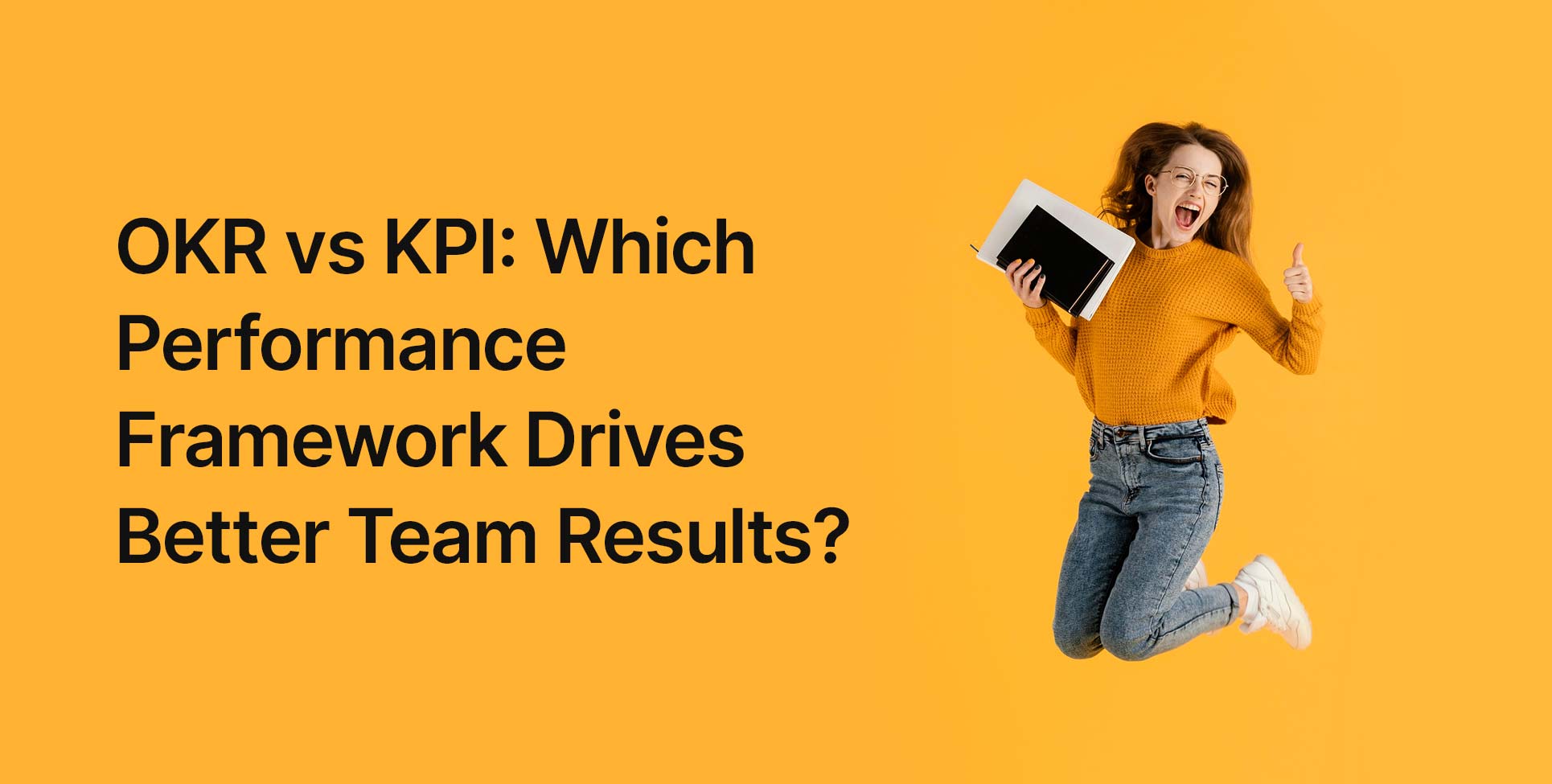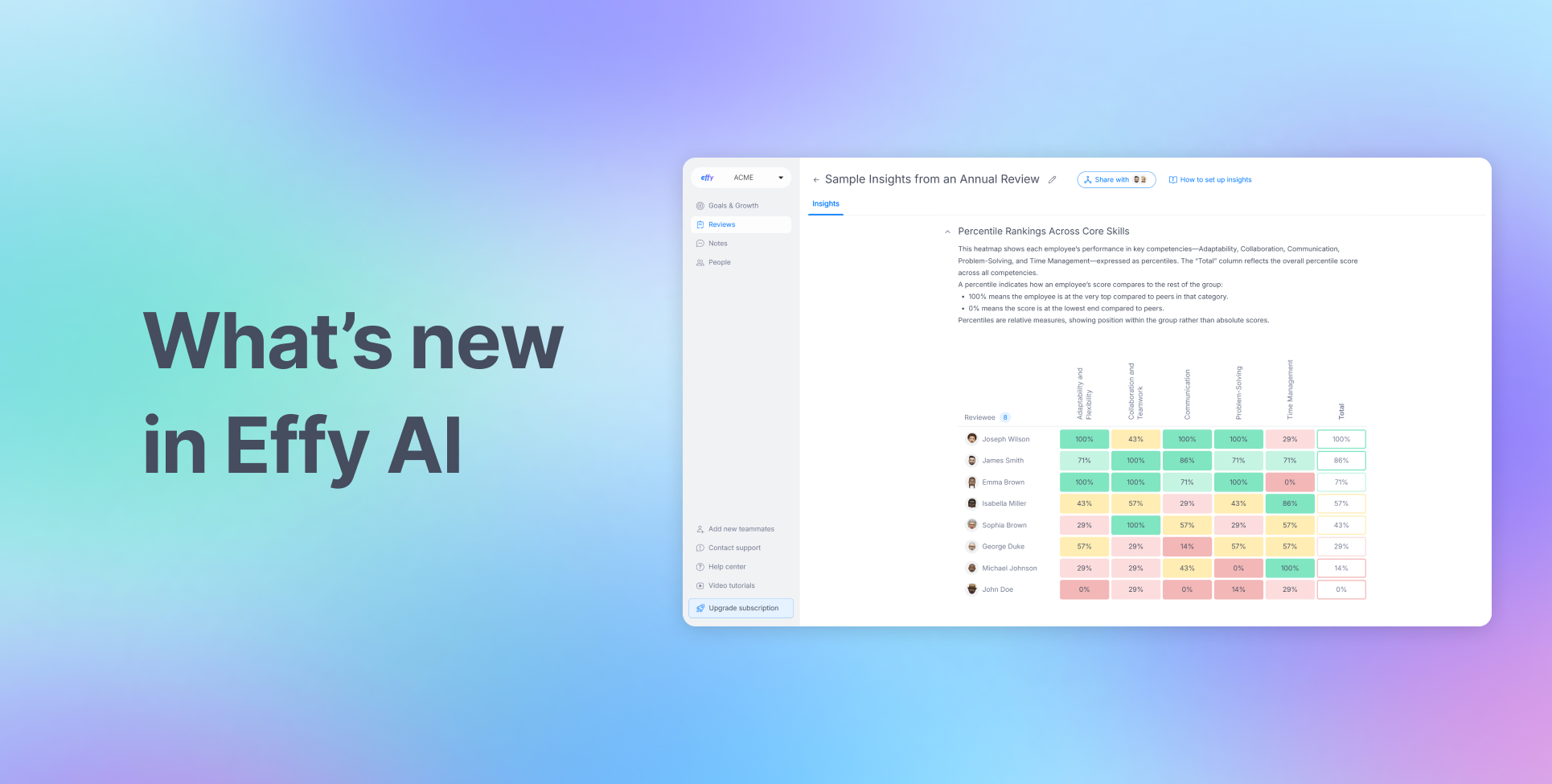Your team hits every monthly target but still feels like they're spinning their wheels. Sound familiar? The problem lies in measuring the wrong things. Choosing between tracking performance and driving breakthrough results can make or break your team's success.
The OKR vs KPI debate is about understanding when to use each framework effectively. OKRs push teams toward ambitious goals while KPIs monitor essential business operations. Smart organizations use both to balance innovation with operational excellence.
This guide breaks down exactly when and how to implement each framework for maximum impact. You'll discover practical examples, integration strategies and actionable insights that transform measurement from busy work into a strategic advantage for your organization.
What are OKRs?
OKRs (Objectives and Key Results) are a goal-setting framework that helps organizations set ambitious targets and measure progress toward achieving them. Each OKR consists of one qualitative objective paired with 2-5 quantitative key results that define success.
Unlike traditional goal-setting methods, OKRs are designed to be aspirational and challenging. Teams typically achieve 60-70% of their OKR targets which indicates appropriate stretch goals. An effective OKR template includes clear objectives with specific, measurable key results and defined timeframes.
Originally developed at Intel and popularized by Google, OKRs operate on quarterly cycles and emphasize transparency across the organization. They align individual and team efforts with company-wide strategic priorities, ensuring everyone works toward the same ambitious outcomes.
What are KPIs?
KPIs (Key Performance Indicators) are measurable values that demonstrate how effectively teams achieve their business objectives. These metrics track ongoing performance in specific areas like sales revenue, customer satisfaction or operational efficiency over extended periods.
Unlike OKRs, KPIs focus on maintaining consistent performance rather than driving transformation. They serve as dashboard indicators that help managers monitor business health and identify trends. KPIs integrate seamlessly into any performance management process to provide continuous oversight and accountability.
KPIs remain relatively stable over time, allowing organizations to track progress and compare performance across different periods. They answer the question "How are we performing?" while providing the foundation for data-driven decision making and operational improvements.
The difference between OKR and KPI
Understanding the OKR vs KPI distinction is crucial for effective performance management. While both frameworks measure progress, they serve fundamentally different purposes and operate on different timescales within organizational planning structures.
OKR examples
OKRs drive breakthrough results and transformational change by setting ambitious, time-bound goals that push teams beyond their comfort zones. They focus on achieving specific outcomes that contribute to strategic advancement and organizational growth over quarterly periods.
When integrated with strategic planning software, OKRs help align team efforts with the company vision while maintaining flexibility to adapt strategies. The KPI vs OKR comparison shows that objectives and key results prioritize innovation and growth over maintaining existing performance levels.
Marketing team OKR:
- Objective: Increase brand awareness in the European market
- Key Result 1: Achieve 50,000 website visitors from European countries
- Key Result 2: Generate 2,000 qualified leads from European prospects
- Key Result 3: Secure 10 partnerships with European influencers
KPI examples
KPIs monitor ongoing operational performance and business health through consistent measurement of critical success factors. They provide stability and accountability by tracking metrics that indicate whether business processes are functioning effectively and meeting established standards.
Key performance indicators serve as early warning systems that alert managers to performance issues before they become critical problems. They measure the steady-state performance that keeps organizations running smoothly while OKRs drive them toward ambitious new achievements.
Sales team KPIs:
- Monthly recurring revenue (MRR)
- Customer acquisition cost (CAC)
- Lead conversion rate percentage
- Average deal size
- Sales cycle length in days
How to use KPIs and OKRs together
Understanding how do OKRs and KPIs work together is essential for comprehensive performance management. Smart organizations use both frameworks simultaneously, leveraging OKRs for strategic breakthrough initiatives while maintaining operational excellence through consistent KPI monitoring.
Start with strategic objectives
Begin your planning process by setting ambitious OKRs that define where you want to go then identify which existing KPIs will support those goals. Your OKR and KPI framework should create a clear connection between daily operations and quarterly breakthroughs.
Create complementary metrics
Ensure your KPIs provide the operational foundation that enables OKR achievement. For example, if your OKR targets customer growth, track customer satisfaction and retention KPIs to maintain service quality during expansion efforts.
Establish regular review cycles
Schedule monthly KPI reviews to monitor ongoing performance while conducting quarterly OKR assessments to evaluate strategic progress. This dual rhythm ensures both operational stability and strategic advancement through consistent team alignment and accountability.
Balance ambition with reality
Use KPIs to maintain business fundamentals while pursuing stretch goals through OKRs. This balanced approach prevents teams from sacrificing operational excellence for ambitious targets, ensuring sustainable growth and performance improvements over time.
A practical example of using both OKR and KPI
Learning how to use KPIs and OKRs effectively becomes clearer through real-world application. Consider a software development team that needs to balance product innovation with operational excellence while maintaining code quality and delivery speed.
This OKR vs KPI example demonstrates how development teams can pursue ambitious product goals while maintaining the operational standards that ensure consistent delivery and customer satisfaction.
Q2 development team OKR:
- Objective: Launch an AI-powered recommendation feature to enhance user engagement
- Key Result 1: Achieve 40% user adoption of the recommendation feature within 30 days
- Key Result 2: Increase average session time by 25% for users with recommendations enabled
- Key Result 3: Generate 15% more clicks on recommended content compared to manual suggestions
Supporting development KPIs:
- Code deployment frequency (weekly releases)
- Bug discovery rate (less than 5 bugs per 1000 lines of code)
- System uptime percentage (99.9% availability)
- Average pull request review time (under 24 hours)
- Customer support ticket volume
The team tracks these key performance indicators continuously while working toward their quarterly objectives and key results. The OKR drives innovation and user value while KPIs ensure they don't compromise code quality or system reliability.
During their 90-day review template assessments, they evaluate both frameworks to understand how operational performance supported strategic achievements and identify areas for improvement in future cycles.
Final thoughts
Effective performance management requires both visionary goals and operational discipline. Companies that master the KPI vs OKR integration create sustainable competitive advantages by balancing breakthrough innovation with consistent execution. Neither framework works effectively in isolation. They complement each other perfectly.
Start by implementing KPIs to establish baseline performance measurement across your core business functions. Once you have operational stability, introduce OKRs to drive strategic initiatives and breakthrough results. This sequenced approach prevents teams from becoming overwhelmed while building measurement capabilities systematically.
Success comes from understanding when to push boundaries and when to maintain standards. Use OKRs to inspire ambitious thinking and KPIs to ensure reliable delivery. Teams that embrace both frameworks create cultures of accountability and achievement that drive long-term organizational success.


